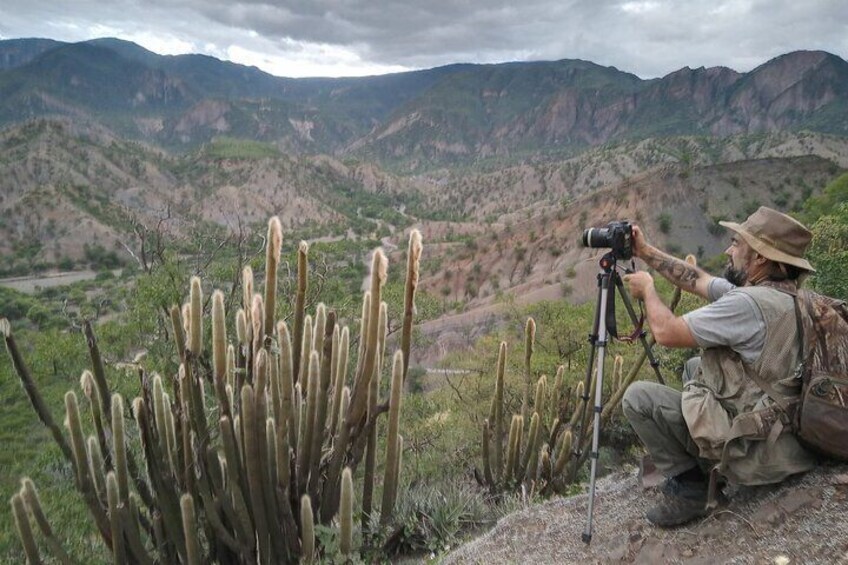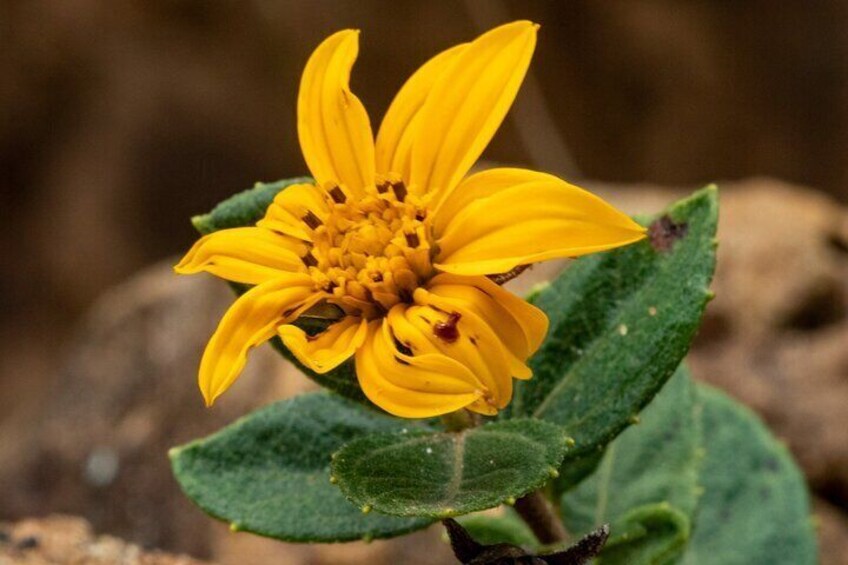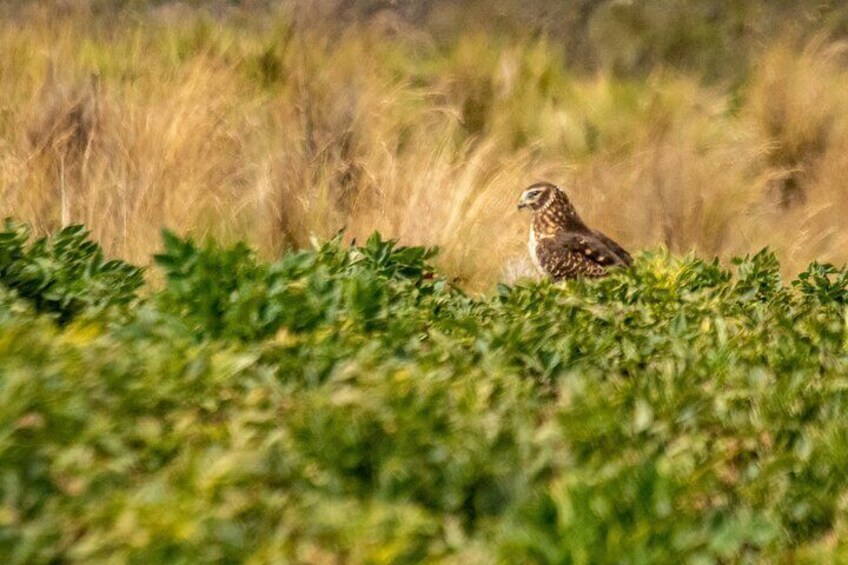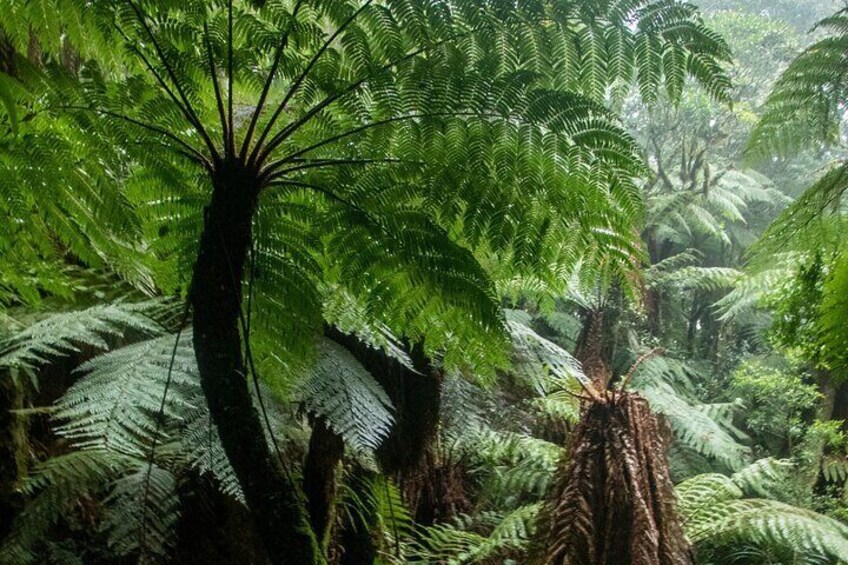Members save 10% or more on over 100,000 hotels worldwide when you’re signed in





Plants and Habitats in the Elbow of the Andes
Features
- Free cancellation available
- 11d
- Mobile voucher
- Instant confirmation
- Selective hotel pickup
- Multiple languages
Overview
Bolivia's “Elbow of the Andes” is an area of great biological significance, a hotspot with high levels of diversity and endemism. We are the only operator offering comprehensive visits to this remote and unexplored area. Our guides, local naturalists, will help you understand both nature and culture.
We will use paved and unpaved roads through stunning scenery, doing short walks to creeks, ravines, and rock outcrops. We will explore the wet Bolivian-Tucuman forest, Chaco-Serrano dry forests, and the unique inter-Andean valleys, each one drier than the previous one. We will visit the only known wild populations of the endemic palm Parajubaea, the rare Cardenasiodendron endemic tree, and one of the few locations with Puya raimondii, the largest bromeliad on Earth. With luck, we will also spot endemic bird species, like the red-fronter paraba and other fauna.
Dates may require coordination. Suggested: November (cacti floration) and April/May 2024 (end of wet season). Duration: 11 days.
Activity location
- Samaipata
- Santa Cruz, Bolivia
Meeting/Redemption Point
- Viru Viru International Airport (VVI)
- Avenida G77
- Santa Cruz de la Sierra, Departamento de Santa Cruz, Bolivia
Check availability
Plants and Habitats in the Elbow of the Andes in Multilingual
- 11d
- Opening hours: Wed 12:00 am-11:30 pm
- English
Pickup included
What's included, what's not
- Lodging is included.
- Airfares to/from Santa Cruz (Bolivia)
- Alcoholic drinks and other personal expenses
- Individual travel or health insurance
Know before you book
- Service animals allowed
- Public transport options are available nearby
- Not recommended for travellers with spinal injuries
- Not recommended for pregnant travellers
- Not recommended for travellers with poor cardiovascular health
- Travellers should have at least a moderate level of physical fitness
Activity itinerary
Day 1: Santa Cruz - tree fern forest - Samaipata
- 1 stop
- Meals: lunch, snacks
- Accommodation: We will stay at one of the several available options in Samaipata town.
Samaipata
- 12h
- Admission ticket included
Day 2: Samaipata - Postrervalle - sunkha palm - Vallegrande
- 1 stop
- Meals: breakfast, lunch, snacks
- Accommodation: Vallegrande is the main town in the area and has several comfortable hotel options.
Vallegrande
- 12h
Day 3: Vallegrande - Pucará - Santa Rosa bridge over Río Grande
- 1 stop
- Meals: breakfast, lunch, snacks
- Accommodation: We will camp at the Santa Rosa bridge over the Río Grande river. Informal but comfortable.
Pucara
- 12h
Day 4: Santa Rosa bridge over Río Grande - Villa Serrano
- 1 stop
- Meals: breakfast, lunch, snacks
- Accommodation: Villa Serrano is a town of moderate size. We will spend the night on one the existing hostals.
Villa Serrano
- 12h
Day 5: Villa Serrano - Presto - El Palmar
- 1 stop
- Meals: breakfast, lunch, snacks
- Accommodation: We will spend the night at the community-owned eco-lodge in El Palmar.
Presto
- 12h
Day 6: El Palmar - Presto - Sucre
- 1 stop
- Meals: breakfast, lunch, snacks
- Accommodation: Sucre is a modern city with plenty of options for comfortable accommodation.
Sucre
- 12h
Day 7: Sucre - Aiquile - Mizque - Kuri bridge
- 1 stop
- Meals: breakfast, lunch, snacks
- Accommodation: We will camp near the Caine river, not far from the main road.
Aiquile
- 12h
Day 8: Kuri bridge - stand of Puya raimondii - Mizque
- 1 stop
- Meals: breakfast, lunch, snacks
- Accommodation: We will spend the night in a hostal or small hotel in Mizque.
Vacas
- 12h
Day 9: Mizque - Aiquile - Omereque
- 1 stop
- Meals: breakfast, lunch, snacks
- Accommodation: Community eco-lodge at Omereque.
Omereque
- 12h
Day 10: Omereque - Pulquina Abajo - Mataral - Samaipata
- 1 stop
- Meals: breakfast, lunch, snacks
- Accommodation: We will spend the night in one of the several hotels in Samaipata.
Mataral
- 12h
Day 11: Samaipata - Santa Cruz
- 1 stop
- Meals: breakfast, lunch
- Accommodation: Not included
Santa Cruz
- 12h
Location
Activity location
- Samaipata
- Santa Cruz, Bolivia
Meeting/Redemption Point
- Viru Viru International Airport (VVI)
- Avenida G77
- Santa Cruz de la Sierra, Departamento de Santa Cruz, Bolivia